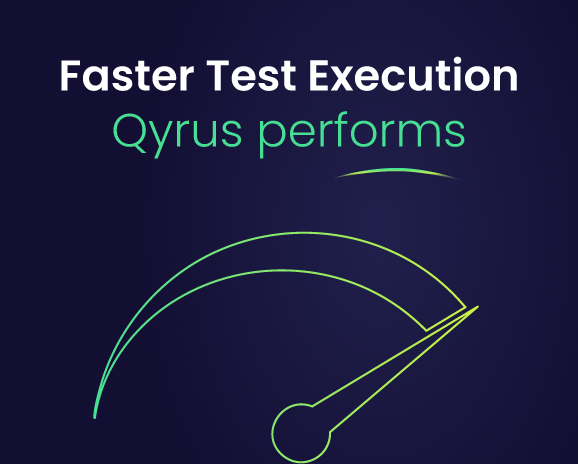Feature Friday – How to Take Testing to Another Level With CI Pipeline Integrations
Chicago knows this time of year. The temperature begins to pinball, foreshadowing the long-awaited summer. Regardless of fandom, team, or even interest in the sport, there is a buzz felt in the air as the collective whispers grow to bedlam, “Take me out to the ball game!”
Let’s ponder for a moment, what makes a ballgame so special? Is it the bright lights that glisten on the freshly trimmed grass, is it the faint aroma of hot dogs and popcorn that tickle the nose, or is it the flood of fans and friendly faces singing in unison during the 7th inning stretch? A baseball game is an accumulation of hundreds of individual pieces, of which the functionality is essential to the heart of the ballgame. This week’s Feature Friday is brought to you by Brett and Linto who will be discussing CI pipeline integrations, which, believe it or not, are more similar to a baseball game than you may think.
Tell us more about the CI pipelines and integrations offered by Qyrus, their use cases, and their impact on testing and QA processes.
Brett:
I think a baseball game is the perfect example to think of when considering a pipeline. A baseball game has hundreds of different components like concession stands, the ticket booth, security, restrooms, seating, crowd management, the game itself, and more. A quality baseball game boils down to the optimization of all these processes.
Linto:
Consider an online store or a delivery service mobile application. They have to handle customer requests, list their services and products, build a payment structure, etc. Pipelines allow users to build out complex scenarios, often testing multiple services and applications in sequence.
Brett:
Think about it this way: prior to pipelines, testing the “ballgame” would require isolating and testing each individual component. Imagine making sure the hot dog stand was functioning properly, then the ticket booth, then the lights one by one. With pipelines, you can automatically trigger all of these pieces to be tested in sequence from a centralized location. Instead of testing all these processes individually, build different user journeys throughout the ballpark that encompass and test many of these processes.
What is the overall impact on the testing process when integrating a CI pipeline with Qyrus?
Brett:
This feature largely impacts the testing process. Conceptually, any development, ranging from feature updates to entire application releases, can be integrated into pipelines during development. Then, anytime code is pushed, these pipelines can trigger these scripts to execute. This provides robust reports of comprehensive application functionality upon all releases.
Linto:
Offering out-of-the-box pipeline integration with Azure DevOps, Bitrise, Concourse, Jenkins, and Team City, we have integrations with industry-leading CI/CD tools. Furthermore, as a cloud-based solution, creating custom integrations is easily achievable and has been implemented for past clients.
Brett:
We see this as a powerful feature that promotes functionality and quality assurance upon the development and deployment of code. Comprehensive testing that is reusable and can be automatically triggered to verify application functionality immediately upon code enhancements and alterations can optimize the testing and QA lifecycle.
This is starting to make sense. Thinking of the ballgame as one big application, these pipeline integrations allow you to test entire “games” at a time, rather than having to isolate and test individual portions of the game. Connecting automated testing to your CI pipeline is a powerful feature in terms of usage and coverage, so we had to ask about similar features within the market.
Does the same or similar functionality exist without Qyrus, and how do competitors address similar problems?
Linto:
Testing solutions often offer integrations with common pipelines. That is not a unique feature. But, the silver lining usually sits within the functionality of these integrations. Qyrus enables test suites to be allocated as build steps within pipelines. Upon execution, Qyrus provides robust visual reporting and actual data feedback.
Brett:
That’s correct. As many integrations allow you to run and provide a general pass/fail indicator, Qyrus goes the extra mile to offer step-by-step data, screenshots, and general test metrics, all located within comprehensive testing pipelines.
We’ve established the relevance of this feature and some unique qualities in relation to competition and similar industry tools, but testing and QA teams have multiple personas and skill sets that need addressing.
How might CI Pipelines help testers, developers, and business technologists? What value can they bring?
Brett:
Testers find this feature useful because they integrate Qyrus scripts into build steps within pipelines. With robust pipelines testing user journeys and edge cases, Qyrus’ test building and infrastructure enhance the testing process and produce reports straight into already built pipelines. This mitigates the requirement of any migration, re-building, or custom requirements. Simply create these build steps and have on-demand, robust test execution and reporting at your fingertips.
Linto:
Developers see the direct and indirect benefits of this feature. As developers build and release new application features, they can simultaneously test these features, import, and integrate these scripts into pipelines. This not only promotes a shift left in the quality assurance lifecycle but also mitigates the need to rebuild tests on a separate platform. Build out tests and pipelines once and have the ability to execute upon command.
Brett:
Even if developers are isolated from the testing and QA lifecycle and don’t directly work with the feature, they can find confidence in the fact that upon commit of new applications, updates, and features, the pipeline’s scripts are automatically triggered for comprehensive functionality and UI testing.
Linto:
Business technologists also find value in the visual aspects of this feature. Being able to follow different pipelines and journeys with clear pass/fail indicators and screenshots for each step allows business analysts to fully understand application functionality and easily navigate business requirements, release cycles, and other required business processes.
A very interesting use case across different personas, this feature is valuable across QA and testing teams.
How do you see CI pipelines impacting day-to-day operations across organizations?
Linto:
Simple test building, comprehensive execution and coverage options, and robust reporting, all quickly integrated into existing pipelines, mitigating any excess resource requirements. I think this feature speaks for itself.
Brett:
And with integrations across Web, Mobile, and API testing, the feature becomes more relevant as testing demands increase. Considering clients with hundreds of tests, prior to pipelines and easy integrations, each script would have to be executed manually or scheduled on our platform. Doing this, every execution can add up to extensive resources and time.
That concludes this week’s Feature Friday with Brett and Linto about CI pipeline integrations offered within the Qyrus testing platform. After going through the purpose of pipelines, the relevance of integrations, and how Qryus integrations are both unique and impactful within the testing and QA lifecycle, we can conclude that applications are not far off from baseball games. Utilizing Qyrus’ CI pipeline integrations can optimize the experience of all users—or, in this case, make a ballgame into a memory.





